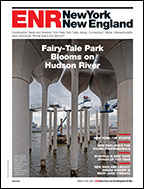Transmission and distribution infrastructure in North America is in the midst of a major shift. An industry that historically has designed to meet the lifespan of its equipment now must refocus that design on the growing challenges of resilience and reliability.
Our dependence on electricity makes us vulnerable to extreme weather changes. Katrina and Sandy were devastating reminders that our power systems need to be designed to better withstand these kinds of events, which are occurring with increasing frequency. But utilities have been slow to make changes, thanks to a web of interconnected challenges:
1. “If it ain’t broke, don’t fix it.”
No one wants to spend the money to upgrade systems that are essentially “working.” The American Society of Civil Engineers (ASCE) highlights the problem in its most recent Report Card for America’s Infrastructure, where it gave energy infrastructure a grade of D+ and noted that “aging equipment has resulted in an increasing number of intermittent power disruptions.” The Report Card added, “although about 17,000 miles of additional high-voltage transmission lines . . . are planned over the next five years, permitting and siting issues threaten their completion.” It’s hard to argue the urgency for upgrades in areas that have not yet had to deal with storm fall-out, but in the Northeast, many utilities are looking into how to design their systems to be more resilient. They have seen first-hand the havoc a storm like Sandy can wreak.
2. Funding.
Getting more funding to pay for these upgrade projects poses a challenge. Utilities now must persuade their boards to raise rates or go to the federal government for more funding to prepare. In New Jersey, for example, PSE&G secured approval from the New Jersey Board of Public Utilities for its “Energy Strong” program, a $1.22-billion effort to harden its electric and gas systems against severe weather damage. That money will fund raising or relocating 29 switching stations and substations damaged by storms, replacing 250 miles of gas mains in flood-prone areas, creating better system redundancy, deploying technologies to better monitor and react to operational issues and protecting natural gas and LNG metering stations.
3. Aging infrastructure.
Not only are we dealing with the need to upgrade systems to better withstand storms, but to do that, we often need to overhaul the entire system due to its age. For example, some substations in the Northeast are so old that the original design drawings simply don’t exist anymore. This complication compounds the funding issue, making the entire effort seem overwhelming and bringing us back to the mentality of “If it ain’t broke . . .”
Fortifying our transmission and distribution systems is a monumental task in which we must essentially scrap the design standards and outlines geared for the 30-year lifespan of a transformer or substation to now address the potentially annual pounding of major weather events. From raising substations, to reinforcing power lines, to accommodating larger infrastructure that can carry higher loads in the event of storm, resilient design is changing the face of T&D. Our energy system is reliable; it just needs the proper care and attention. Better to give that attention now, before the next storm hits.
Mehmet Arslan, Senior Principal, and Bob Dickie, Senior Principal, lead Stantec’s growing transmission and distribution team.


